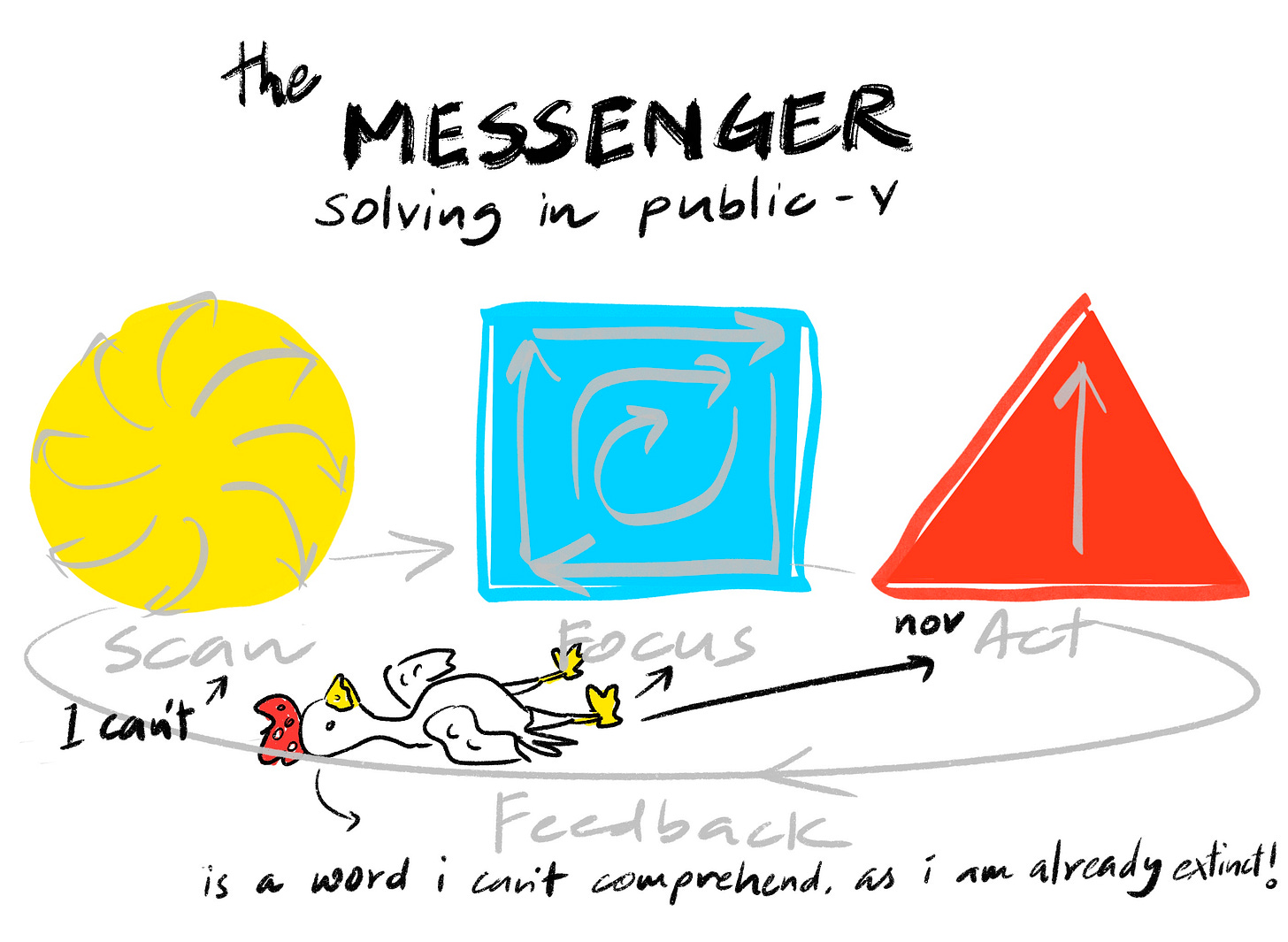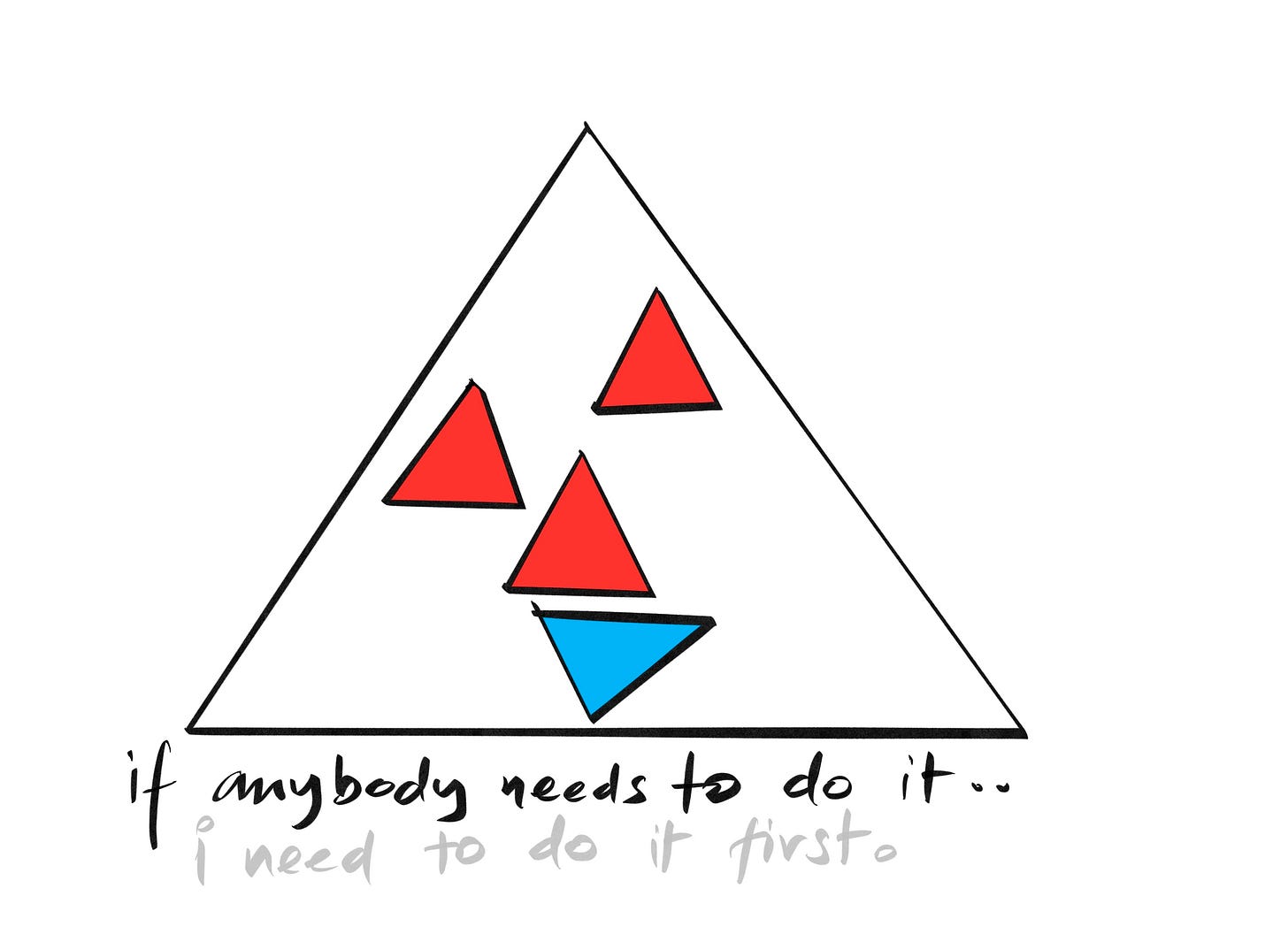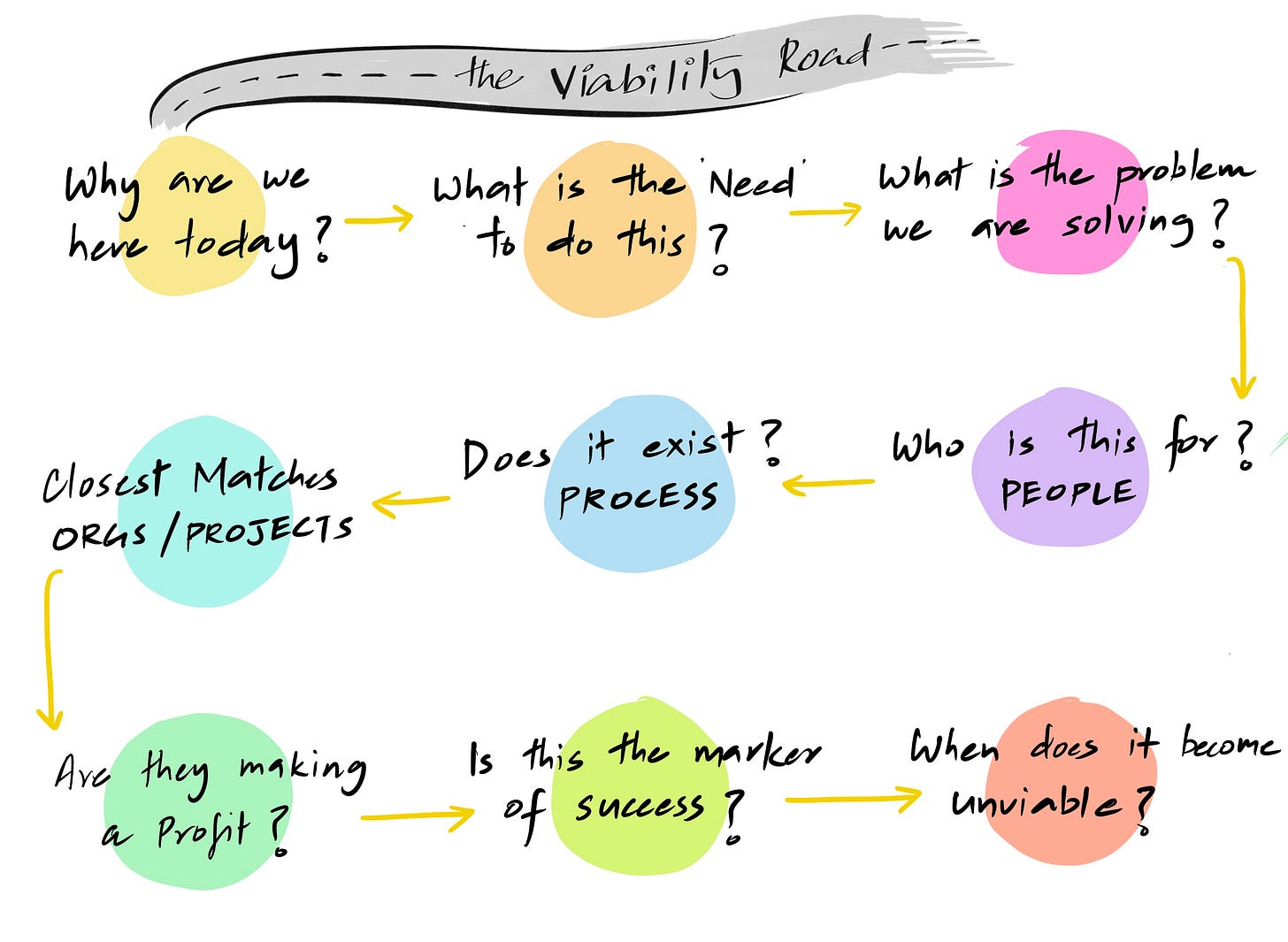Solving in Public V: Some Design Suggestions
How must one communicate a public problem and its potential solutions? In this series, we have been engaging with heat as a problem that affects the public across India, and in particular, Delhi. There are various approaches to developing a heat action plan. The conventional method typically involves forming a committee, which includes representatives from all relevant departments and possibly some experts, to address heat emergencies. The committee then produces a report outlining its findings and recommendations. Even when well meaning, the plan by committee doesn’t a) reverse engineer what citizens need during heat emergencies and b) prototype what needs to be done to turn high level plans into processes that address those citizen needs. We believe a little bit of design thinking can make heat action plans more understandable, tangible and actionable, which is why we are proposing an approach that prioritizes design and functionality.
One aspect of heat action plan design is the design of the report itself. We believe that the report should make a case for itself: why are we seeing the heat emergency this way rather than that way, why are we focusing on this population rather than that population and so on, in a lawyerly vein we started in the first essay in this series. The heat action plan has to make a case to several stakeholders: government officials, business owners, school principals and most importantly, the citizens. If citizens are the most important stakeholders, case-making has to start by identifying citizen needs, i.e., the specific challenges they will face as a result of extreme heat and therefore, the challenges the heat action plan should aim to address. For instance, if the goal is to ensure everyone has access to shelters during a heat emergency, the plan should directly address and resolve this issue. … a way of making a case for a particular way of looking at a problem and in response, particular ways of looking at the solution. For example, we might look at heat emergencies from a governmental perspective: ‘which departments are responsible for what?’ or a citizens perspective: ‘who is going to suffer and how?’. We are biased, but we think the second perspective is a lot better. In short: governments should make a case for how they are going to address heat and even better, make the information on which they are making their case public.
Let’s go back to the existing Delhi Heat Action Plan, which declares its goals thus:
Benefits of Heat wave Action Plan
Prevents deaths associated with heat strokes.
Government commitment to protect the poor and vulnerable citizens.
Reduces chances of illness due to heat waves.
Making Indian cities future ready, Climate resilient cities.
Better preparedness of hospitals/health centres.
Economic losses- labour productivity, loss of job days, reduced labour and opportunity loss.
These are laudable goals, ones we can all get behind. But how exactly will these goals be achieved? How will the government machinery convert objectives into processes? Can we see the design of that system? Can we intervene in that system to augment government capacity? Let’s look at inter-agency coordination. Ideally, we want the moving parts to talk to each other in real time, and even better, to take inputs from non-governmental actors when needed. As a thought experiment, we want to share a design of the Heat Action Plan Coordination Platform inspired by the need to facilitate seamless communication and task management among multiple agencies in an emergency. Given that the platform is intended to be used during times of crisis, clarity and ease of use were prioritized above all else. This meant focusing on clean layouts, minimal but informative content, and a user-friendly experience to ensure that critical information could be accessed and updated quickly.
The first step was identifying the essential features required for effective inter-agency coordination: updating statuses, assigning and tracking tasks, and marking tasks as complete. Each of these functions was given its own dedicated section on the mocked-up webapp (see screenshots below), making it easy for users to navigate and perform the needed actions. The decision to group similar actions and provide clear labels and input fields aimed to eliminate any possible confusion during a heat emergency when timely decisions are crucial. The visual hierarchy, achieved by separating different functionalities into distinct boxes and using different headings, further ensured that users could easily locate what they needed to do without being overwhelmed by too much information on one screen.
Aesthetic choices were made to enhance usability while maintaining simplicity. For example, the blue color scheme for headings and buttons was selected to convey a sense of calm and trust, while the white backgrounds and rounded edges provided a clean, modern look. Buttons were designed with hover effects to indicate interactivity, giving users feedback when interacting with the elements. Input fields were designed to be large and clearly labeled, enabling quick data entry, while a consistent padding and margin scheme ensured a well-balanced and visually pleasing layout. The use of CSS to create a structured and organized page layout also aimed to reduce visual clutter, helping users focus on the task at hand without distractions.
Overall, the design process was guided by the principles of simplicity, accessibility, and efficiency. Each design decision, from the layout to the color palette, was driven by the ultimate goal of creating a platform that supports effective emergency response during heat waves. By ensuring that each agency's role is clearly represented and that the system is easy to interact with, the platform is designed to facilitate cooperation and coordination, helping to mitigate the risks and impacts of extreme heat events. You can see a screenshot of the platform below. But it’s a thought experiment, remember? So don’t worry about the details, just note that it’s possible to make inter-agency interaction transparent to everyone, including the agencies. It doesn’t even have to a tech platform, though that would clearly help. In any case, the simpler it is, the better.
But this backend doesn’t give employers a role. Surely you want them to install (and pay for) shelter material or transport water from a central source to where their workers are and many other contributions. What happens when we add them into the picture? Something like what we have below:
Don’t get us wrong; we want any actual production system to be a zillion times better than our mockups, but these are already more actionable than the plan by committee. What both mockups leave out is how this information will be made available to citizens. The Emergency Heat Alert System should be designed proactively keep residents informed, safe, and connected during extreme heat events. It builds on existing coordination between government agencies and employers while focusing on citizens' needs, especially vulnerable groups. The system provides timely heat alerts via SMS, mobile app notifications, and emails, using a color-coded system to indicate severity. Citizens are informed about cooling centers, water points, and shelters through a map interface.
The system targets high-risk populations, sending personalized alerts and health advisories to help mitigate heat-related health risks. Citizens can report emergencies or request assistance through the app or a hotline, enabling swift response. A chatbot also provides answers to common questions, ensuring accessible support.
Employers are integrated into the system, receiving alerts to modify work schedules for outdoor workers and communicate safety measures. This collaboration helps protect vulnerable employees during heat waves. Additionally, the system includes a Neighbou r Alert Program, encouraging citizens to check on vulnerable neighbors, fostering community resilience. Overall, the Emergency Heat Alert System should provide timely information, easy access to resources, and foster collaboration, ensuring citizens are prepared, informed, and supported during heat events. A simple interface for such a citizen facing system might look like: A simple interface for such a citizen facing system might look like:
Once again, the idea isn’t that these mockups are indicative of a final production system, but looking at these images already make a very different case than reading a heat action plan document, doesn’t it?
Series Conclusion
Skillful citizenship is about citizens organizing to solve public problems—knowledgeably, effectively, and in real-time. Especially with climate change, citizen self-organization has to complement formal government actions, as traditional approaches were often too slow for urgent needs like climate emergencies.
In this essay, we made a case for a skillful, data-driven approach to public problem solving, using heat waves in Delhi as a focal point. Knowledge to solve wicked problems, like extreme heat, needed to be contextual, actionable, adaptive, and robust. However, traditional plans like the Delhi Disaster Management Authority's (DDMA) Heat Action Plan fell short on these attributes. The DDMA plan lacked precision, adaptability, and inclusivity—key components of truly impactful action. The existing plan, although well-intentioned, failed to address the distinct needs of vulnerable populations effectively. For instance, actions like ensuring cooling centers or specific insurance measures for marginalized workers remained vague and lacked clear direction or accountability.
We explored the role of design in public problem-solving, drawing parallels to software design—how governments, like designers, should create solutions with diverse user needs in mind. Design thinking, applied thoughtfully, could bring about equality and dignity in public service delivery. But unlike consumer products, services for citizens had to go beyond customer satisfaction to address political accountability, ensure recourse, and provide equitable service. Citizens weren't consumers, and public systems couldn't function like for-profit enterprises.
With increasing heat waves, exemplified by recent record-breaking temperatures, effective, citizen-centric responses were crucial. We critiqued the lack of depth in current heat action plan and argued for “designing for knowledge”—creating plans that were adaptable, provided real-time response mechanisms, and incorporated detailed demographic insights. For instance, a programmatic approach that connected meteorological alerts to labor and health departments could ensure immediate, coordinated action.
In contrast to static, top-down plans, a skillful approach to heat adaptation involved an interconnected system of government agencies, non-government stakeholders, and the community at large. We advocated for an Ecological Programming Interface (EPI), a platform enabling seamless, dynamic coordination between stakeholders during heat events. Such a platform could provide a transparent mechanism for inter-agency coordination, as well as include employers and citizens in the response—from setting up cooling centers to ensuring water availability and protecting vulnerable populations.
We suggested that public problem-solving had to be accessible to everyone. “Making a case” for action on heat waves involved not only understanding statistical and scientific data but also considering the lived experiences of different citizens. Demographic analysis, grounded in the 2011 census data, revealed a complex picture: most working-class citizens in Delhi were men, many of whom worked in high-heat vulnerable jobs, while non-workers, such as children and the elderly, also faced unique challenges. Addressing these diverse realities required solutions that cater to different needs, from enhancing school safety to setting up shelters for workers.
Addressing public problems like extreme heat require a citizen-centered approach that integrate design thinking, adaptability, and robust inter-agency coordination. Traditional, static plans are inadequate for the scale and urgency of climate-related challenges. By creating transparent, programmatic platforms that enable real-time action, we can better serve our citizens, protect vulnerable populations, and respond effectively to the escalating impacts of climate change. Skillful citizenship, supported by well-designed systems, has the potential to bridge the gap between data-driven insights and practical, equitable action. Ultimately, it is about empowering communities to take control of their well-being in a rapidly changing environment.













